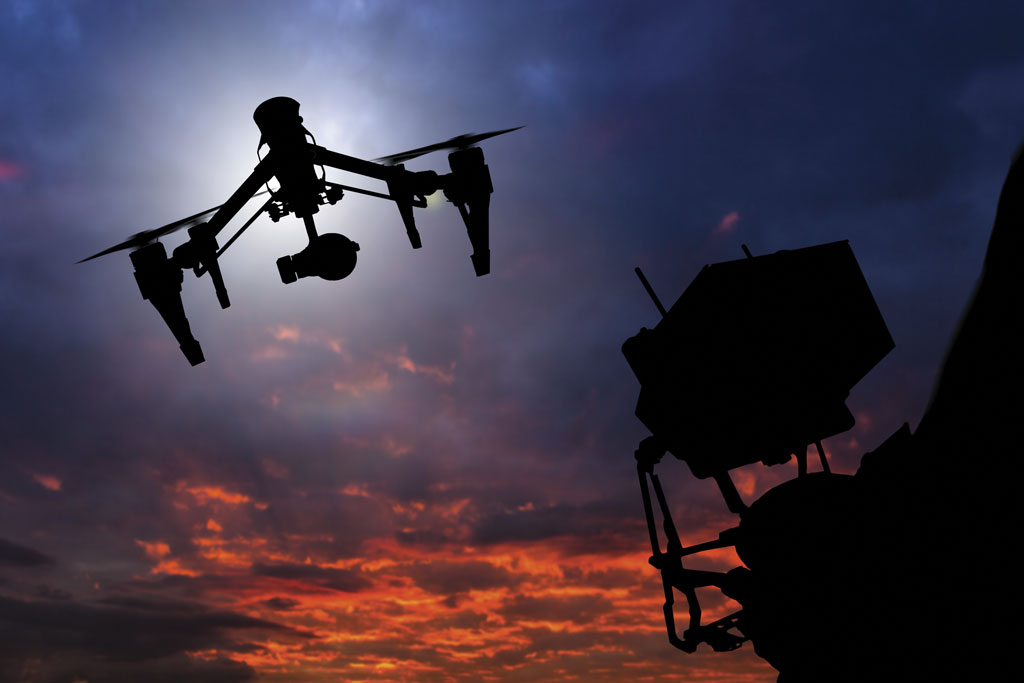Drones: a new privacy threat
For years, yachts and oceans have been used to get away from the crowds, media, and various sets of prying eyes. This is rapidly changing with consumer drones that are cheap and easy to obtain and control. They are able to fly kilometers on a single charge and by pilots having minimal training. Powerful cameras are attached to the drone’s underbelly and their use is changing what used to be a tranquil space. While beneficial uses of drones are plentiful, so are the nefarious applications. ISIS has been reported to strap DIY grenades to drones and deploy against Iraqi military and civilian populations. Plane spotters deploying drones have been creating havoc around airports with flights halted until the drones are neutralized. Prisons regularly report that contraband is delivered by drones and there are many other novel uses of this new technology.
 One such nefarious application is the invasion of privacy – much like when the introduction of cameras in the 1900’s sparked privacy concerns a century ago. In addition to movie studios being concerned with fan drones flying around production sets, the paparazzi taking celebrity shots using drones, and others use them to peek into the windows of houses; the privacy threat has come to yachts. A drone can easily fly off land or from another yacht towards the target yacht and take photos or a video. This is easily accomplished as the drone is mostly invisible and controlled by a pilot using powerful cameras that can film a long distance from its target. A DJI Phantom drone typically cannot be seen by the naked eye within 200-300 meters in the best conditions. Visibility if further reduced when there is low contrast such as a white drone hovering in front of a white cloud. And if one is not deliberately looking for a drone, it is unlikely to notice even if it is only a few dozen meters away - it is much like focusing on one conversation at a time at a loud party.
One such nefarious application is the invasion of privacy – much like when the introduction of cameras in the 1900’s sparked privacy concerns a century ago. In addition to movie studios being concerned with fan drones flying around production sets, the paparazzi taking celebrity shots using drones, and others use them to peek into the windows of houses; the privacy threat has come to yachts. A drone can easily fly off land or from another yacht towards the target yacht and take photos or a video. This is easily accomplished as the drone is mostly invisible and controlled by a pilot using powerful cameras that can film a long distance from its target. A DJI Phantom drone typically cannot be seen by the naked eye within 200-300 meters in the best conditions. Visibility if further reduced when there is low contrast such as a white drone hovering in front of a white cloud. And if one is not deliberately looking for a drone, it is unlikely to notice even if it is only a few dozen meters away - it is much like focusing on one conversation at a time at a loud party.
On the other end of the drone could be the paparazzi, an industrial competitor seeking to learn trade secrets, an investigator hired by an over jealous spouse, or even a blackmailer going after an unsuspecting target.
With the issue so new, there are no privacy laws available. The illegal surveillance and trespassing laws are generally archaical and do not include aerial sources.
So what can be done to alleviate this threat? Detection is always the first step. Unlike the human mind, which cannot be on alert for drones at all times, machines are an excellent choice to perform continuous surveillance. A combination of sensors is usually best with regard to maximizing the probability of detection while minimizing false alarms. Think of a fire alarm that rings every day without a fire. Eventually the house owner switches off the alarm. The technologies available on the market today include radiofrequency, radar, acoustic, thermal and optical cameras. The range of such sensors can be up to several km, giving some warning time, and in some instances a direction from where the threat is coming.
But what to do next? Unlike detection which is universally legal (with some caveats such as privacy regulations in some situations) countermeasures for non-government users are more complicated legally. Generally speaking, there are three types of responses: (1) avoidance, (2) hard kill, (3) soft kill.
Avoidance is essentially going inside, closing blinds, and taking the yacht outside of the area of the drone’s operation. Drone batteries are typically too limited today to hover for hours while waiting for the target to re-emerge. Hardly ideal, it is the safest legal approach today until the laws around drones and aviation catch up.
Hard kill includes bullets, nets and the like. While bullets are effective on direct impact, drones are known to be very difficult targets. They are small and fast moving and will likely require multiple shots where collateral damage is likely. Nets also have a very limited range. Additionally, hard kill can be unlawful – especially bullets.
Soft kill is generally recognized today as the best countermeasure where lawful to deploy by the user.
A portable rifle-shaped jammer can shoot a jamming signal in a cone and reduces the need for exact targeting. There have been arguments of law regarding the use of jammers on the High Seas and not in port, thus, much like firearms topics, readers should seek their own legal advice. The jammer is effective up to a couple of kilometers. The video transmission of the drone cuts immediately and it responds by either landing down or going back to where it came from. The jamming is effective against both remotely controlled and GPS-controlled drones. Jamming can be modular to either include GPS jamming or not. GPS jamming has its own legalities associated with it and is generally reserved for military and federal agency customers only. After a signal is jammed, if the drone lands on the deck of the yacht it can be retrieved intact and an investigation conducted.
The counter-drone industry is evolving quickly, much like drones themselves with underwater drones becoming the next technology wave to arrive to the scene! Yacht owners need to be aware of the privacy and security issues and be able to take measures.
